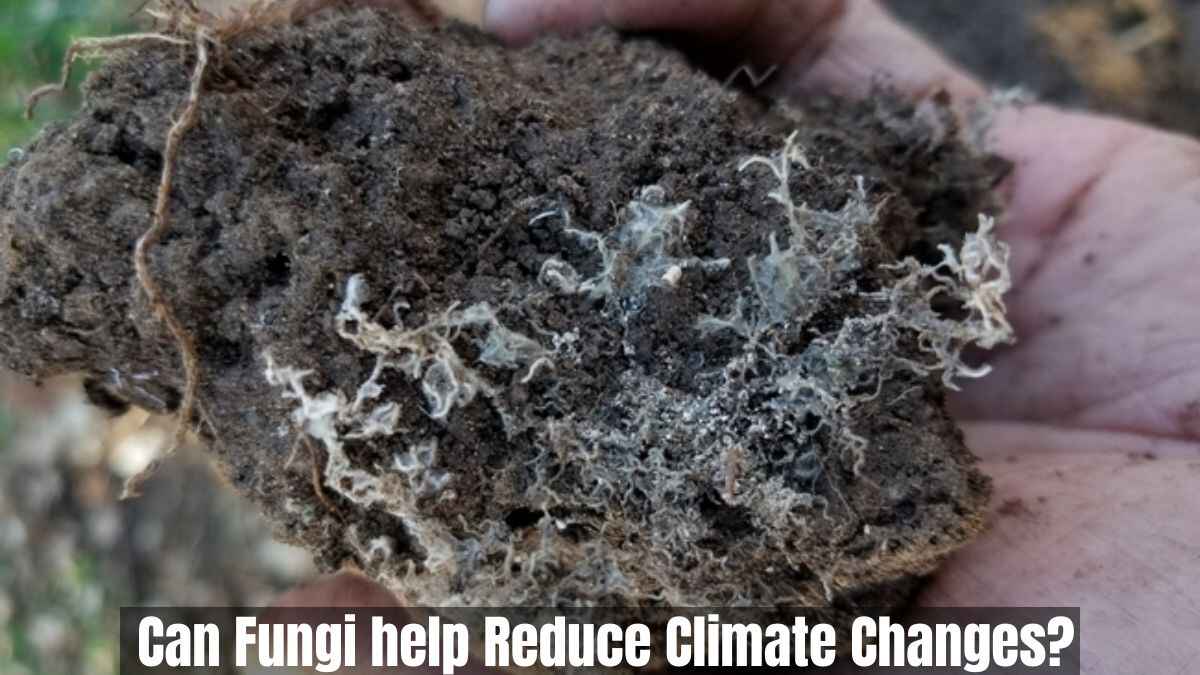Mushrooms, with their remarkable abilities, offer a potential solution to the urgent problem of climate change. These organisms play an important role in the environment and provide various benefits in mitigating climate change. An important contribution of fungi is their ability to sequester carbon dioxide, thereby reducing greenhouse gas concentrations in the atmosphere. Recent research conducted by the University of Sheffield has revealed the astonishing discovery that fungi could be responsible for absorbing around 36% of global fossil fuel emissions.
Beneath the Earth’s surface lies a widespread network of fungi, storing more than 13 billion tons of carbon worldwide. This storage capacity is equivalent to 36% of annual global fossil fuel emissions. Previously, the true extent of carbon storage by mycorrhizal fungi, which form symbiotic relationships with most land plants, was not fully understood. These fungi transport carbon that plants convert into sugars and fats into the soil. The discovery of their important role in carbon storage highlights their potential to tackle climate change and achieve net zero emissions. Scientists are now looking for ways to improve the carbon storage capacity of the soil beneath our feet.

Mycorrhizal fungi have played an important role in supporting terrestrial life for at least 450 million years. They form vast underground networks, even extending beneath roads, gardens and buildings on every continent. An international team of scientists, including experts from the University of Sheffield’s School of Biological Sciences, conducted a meta-analysis of many studies on plant-soil processes. Their research, published in the journal Current Biology, revealed that an estimated 13.12 billion tons of carbon dioxide are transferred from plants to fungi annually. This process turns soil into a giant carbon sink, making it the most efficient unit of carbon capture and storage globally.
The amount of carbon stored by fungi accounts for about 36% of annual global fossil fuel emissions, surpassing China’s annual emissions. As a result, researchers are advocating the inclusion of fungi in conservation and biodiversity policies due to their important role in reducing carbon emissions. If current trends continue, the United Nations warns that 90% of land could be degraded by 2050, leading to catastrophic consequences for climate change mitigation, rising temperatures and crop yields. plant.

Professor Katie Field, co-author of the study and an expert in plant soil processes at the University of Sheffield, emphasized the importance of symbiotic mycorrhizal fungi. She emphasizes that these fungi are often overlooked in carbon modeling, conservation efforts, and ecological restoration.
she explained “Mycorrhizal fungi are a blind spot in modelling, carbon conservation and recovery – the numbers we discovered are staggering and when we think about solutions for climate we should also think about these What can we exploit already?” .”
Researchers are now further studying fungi’s ability to store carbon in soil and further exploring the multifaceted role fungi play in Earth’s ecosystem.
Dr. Heidi Hawkins, lead author of the study from the University of Cape Town, noted that while forests have received significant attention as a natural means of mitigating climate change, very little depends on the fate of the significant amounts of carbon dioxide that move from the atmosphere to mycorrhizal fungi through photosynthesis.
Dr. Hawkins adds, “A major gap in our knowledge is the persistence of carbon in the structures of mycorrhizal fungi. We know that it is a lineage, with some retained in the mycorrhizal structure while the fungus lives and even after the fungus dies. Some will be broken down into small carbon molecules and from there bond with particles in the soil or even be reused by plants. And inevitably, some carbon will be lost as carbon dioxide during the respiration of other bacteria or the fungus itself.”
Professor Toby Kiers, senior author from Vrije Universiteit Amsterdam and co-founder of the Underground Network Protection Consortium, highlights the global effort to understand the role of fungi in Earth’s ecosystem.
“This paper is part of a global effort to understand the role of fungi in Earth’s ecosystem. We know that mycorrhizal fungi are extremely important ecosystem engineers, but are invisible to most. Mycorrhizal fungi lie at the base of the food web that supports much of life on Earth, but we are just beginning to understand how they really work. There is still a lot to learn.”
Ongoing research, led by the University of Sheffield’s School of Biological Sciences, is currently studying the specific role of symbiotic mycorrhizal fungi in soil carbon and nutrient cycling. By simulating future climate in specialized outdoor experiments, this research, funded by NERC, aims to improve our understanding of the important contributions of soil fungi, along with other bacteria, in subterranean carbon transfer and how these processes will be affected by future climate change.
Categories: Optical Illusion
Source: pagasa.edu.vn
